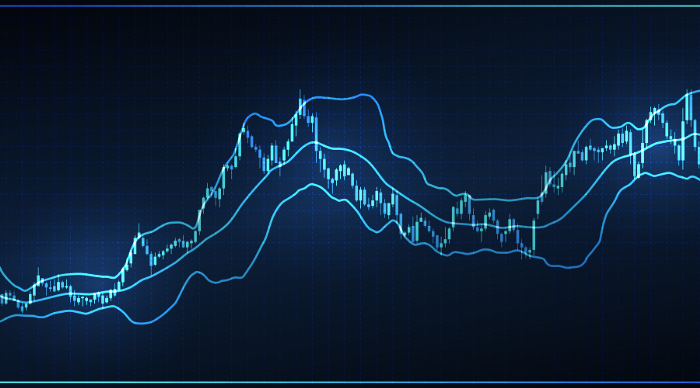Day Trend Analysis Using Bollinger Bands
Dec 31, 2023 By Triston Martin

Where:
Higher Bollinger Band = BOLU
Lesser Bollinger Band = BOLD
Moving Average = MA
TP (typical price) = (Close+High+Low) ÷ 3
No. of days in flattening period = n
No. of standard deviations = M
σ[TP,n]=Standard Deviation in final n phases of TP
Using the Overbought and Oversold Approach
Using Bollinger Bands to spot overbought or oversold market conditions is a standard strategy. Prices may have gone too far and are due for a bounce if they drop below the lower band of the Bollinger Bands. On the other hand, the market may be overbought and need a retracement if the price breaks above the upper band. The idea of the price means reverting rests on utilizing the bands as oversold meters. The idea behind mean reversion is that if a price significantly deviates from the mean or average, it will eventually return to the mean price. Mean reversion methods can be effective in range-bound markets since prices bounce back and forth between the two bands.

Bollinger Bands don't always provide special buy and sell indications, however. For instance, when there is a strong trend, the trader faces the danger of entering trades on the wrong side of the movement since the indicator may prematurely flash overbought or oversold signals. To address this, a trader can consider the general price trend and only act on trade signals that align with the movement. If the trend is downward, for instance, only enter short positions when the upper band is tagged. Although a new long position is not opened because doing so would require going against the trend, the lower band can still be used as an exit if desired.
Create Several Bands to Gain More Insight
"Tags of the bands are just that, tags, not signals," John Bollinger admitted. A touch or tag of the upper Bollinger Band does not necessarily indicate a sell signal. An indication to buy does not necessarily exist when the lower Bollinger Band® is tagged. In those situations, where price frequently "walks the band," traders who persistently attempt to "sell the top" or "purchase the bottom" are subjected to an agonizing string of stop-outs, or worse, ever-mounting losses as price travels farther and further from the initial entrance. We can take a fresh look at price by creating two pairs of Bollinger Bands, one with the factor "one standard deviation" other one with the typical value "two standard deviations". This Bollinger Band shall be referred to as "bands."

If cost channels between Bollinger Bands -2 SD and -1 SD, this is inside the "sell region," and if the cost wanders among +1 SD band and -1 SD band, this is in a neutral state, as well as we could say that it's in new zone. For instance, the chart below shows that whenever the price holds between the upper Bollinger Bands +2 SD and +1 SD away from the mean, the trend is up; therefore, we can define that channel as the "buy as volatility rises and falls, Bollinger Bands adjust dynamically to the price enlarging and contracting. Due to the bands' natural widening and narrowing in response to price movement, an exact trending envelope is produced.
-
 Banking Oct 14, 2023
Banking Oct 14, 2023What to Look for in an All-In-One Credit Card
Discover the key factors to consider when choosing an all-in-one credit card. Make the right choice for your financial needs.
-
 Mortgages Oct 20, 2023
Mortgages Oct 20, 2023What Makes a Good Realtor
Find out what qualities make up a great realtor and how to choose one for you. With this guide, your house hunt will be stress-free and successful!
-
 Mortgages Nov 22, 2023
Mortgages Nov 22, 2023How to Buy a House with Multiple Owners?
Buying a house with multiple owners is an intricate and potentially complicated process. It is important to properly research and understand the legal arrangement of the sale, as well as the local real estate laws and regulations.
-
 Banking Oct 06, 2023
Banking Oct 06, 2023What You Need to Know About the Belk Credit Card and How to Apply for It
Become an elite shopper with a Belk credit card. You can use it to earn rewards, enjoy discounts, and shop smarter.
